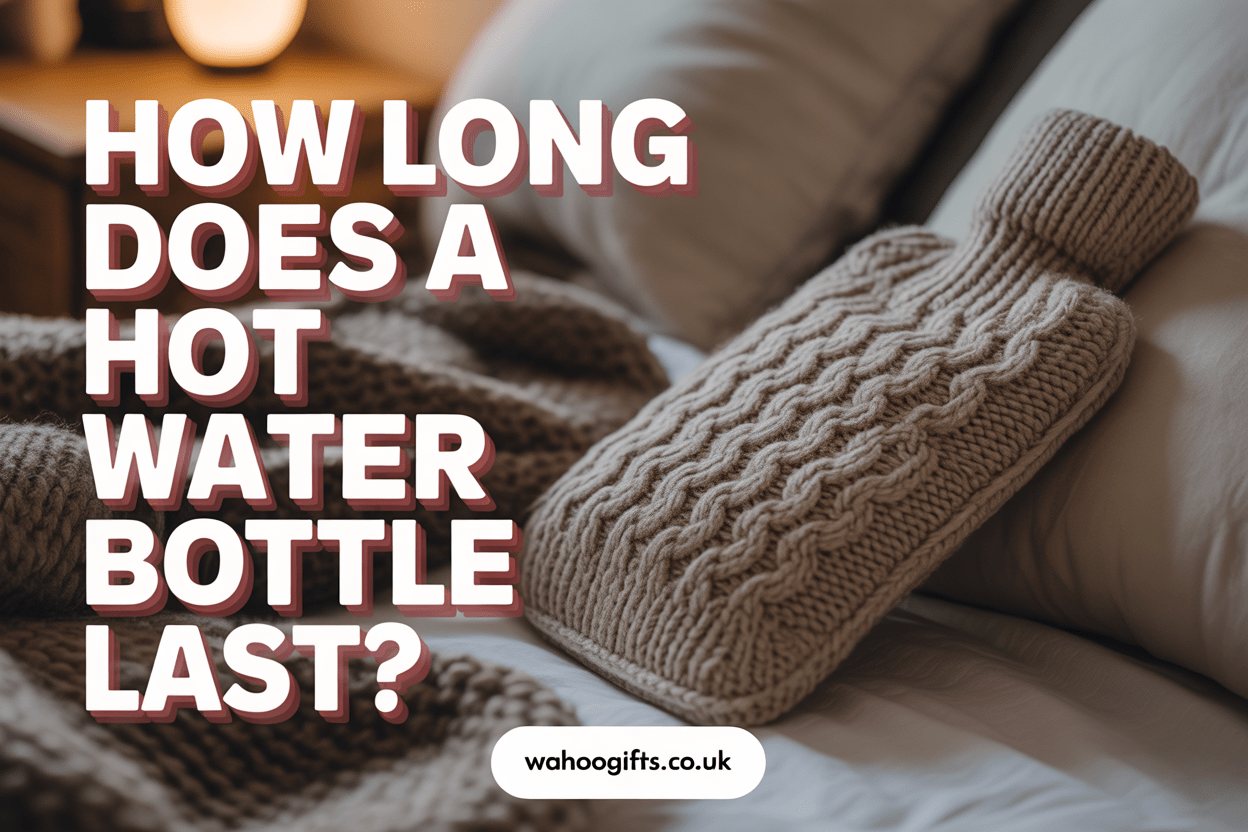
How Long Does a Hot Water Bottle Last? Essential Safety Tips Inside
How Long Does a Hot Water Bottle Last? Essential Lifespan Tips and Safety Advice
Hot water bottles usually last about two to three years. However, if you’re wondering how long does a hot water bottle last, you’ll find that their lifespan depends on material quality, frequency of use, and proper care. This article will help you know what to look for and how to keep your hot water bottle in good condition.
Key Takeaways
-
The average lifespan of a hot water bottle is about two years, necessitating regular checks for wear and timely replacement.
-
Frequent use and improper storage can accelerate material degradation, while high-quality materials, like silicone, can enhance longevity.
-
Safety practices, such as using a cover, avoiding boiling water, and following manufacturer guidelines, are crucial to prevent accidents and injuries.
Understanding the Lifespan of Hot Water Bottles
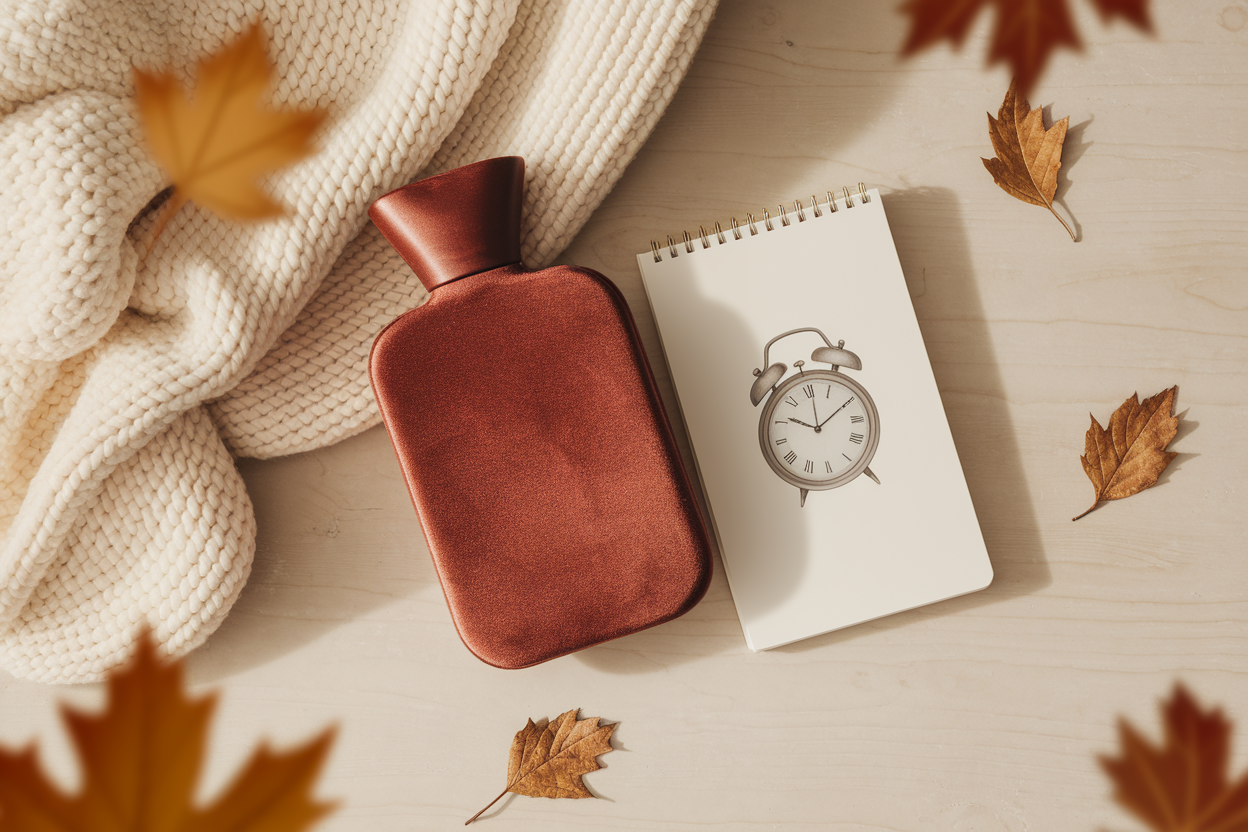
Hot water bottles are immensely useful, but they don’t last forever. The typical lifespan of a hot water bottle is around two years, though this can vary based on how often it is used and how well it is maintained. Frequent use can significantly shorten a hot water bottle’s lifespan, making it essential to monitor its condition regularly.
Adhering to safety standards, such as the British Standard BS1970:2012, ensures safe usage and helps determine replacement timelines. Keeping an eye on the bottle’s condition and knowing when it was manufactured can help you decide when it’s time to replace it.
Let’s explore these aspects in more detail.
Average Lifespan
On average, hot water bottles:
-
Last about two years with regular use.
-
Should generally be replaced every two to three years due to material degradation, which relates to the hot water bottle’s age.
-
Experience material degradation over time, which impacts their safety and effectiveness.
Replacing your hot water bottle every two to three years is essential to avoid safety risks and ensure reliable performance.
Signs of Wear and Tear
Recognizing signs of wear and tear ensures the safe usage of your hot water bottle. Common signs include:
-
Visible cracks
-
Creases
-
Discoloration Over time, these signs can affect the bottle’s performance and safety. Identifying these signs early can prevent potential hazards and injuries.
Checking the Expiry Date
Check the manufacture date to determine the bottle’s age and ensure it is safe to use. This can usually be found by removing the cover and looking for a round logo on the bottle.
Assess the manufacture date to determine if the bottle is still within its safe usage period.
Factors Affecting Longevity
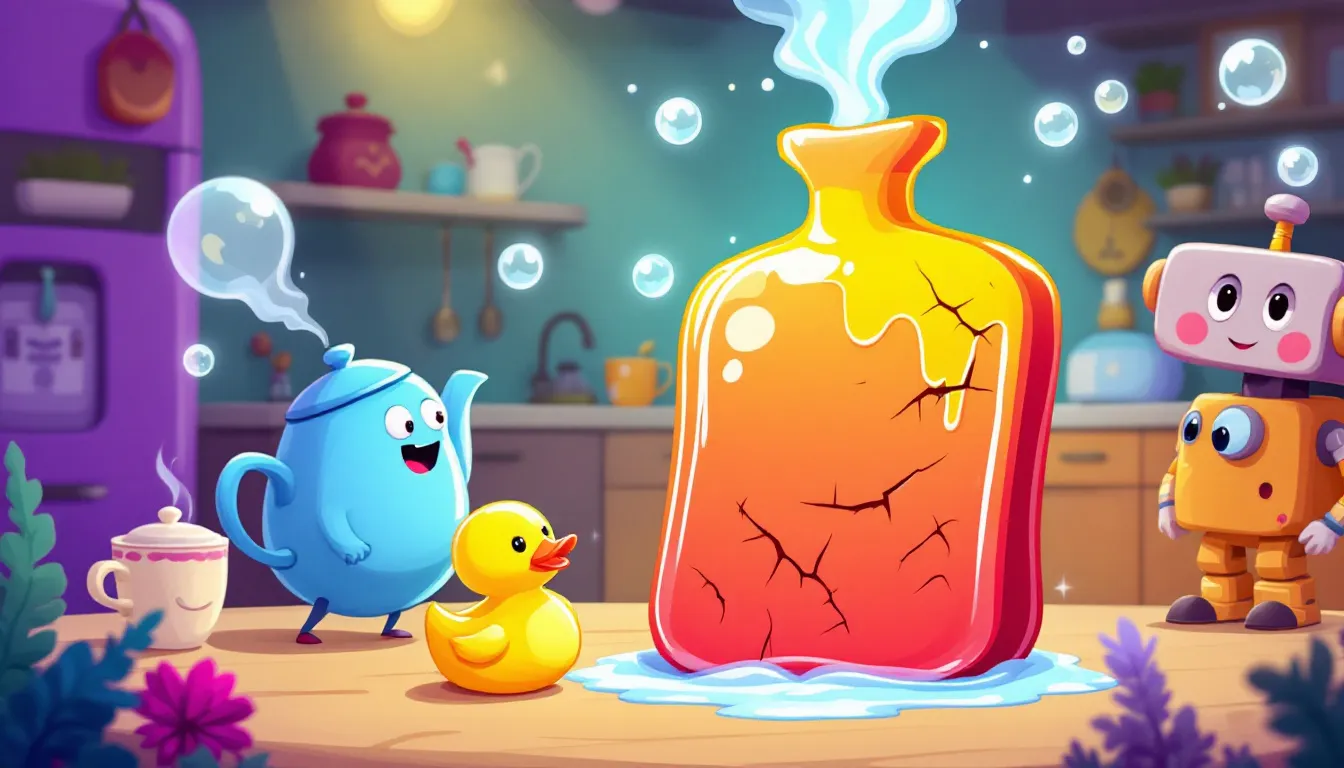
Several factors play a critical role in determining how long a hot water bottle will last. The quality of the material, frequency of use, and storage conditions are all pivotal. For instance, high-quality materials significantly enhance the longevity of hot water bottles. Understanding these factors can help you make informed decisions about your hot water bottle’s care and replacement.
Consider the following factors: material quality, frequency of use, and storage conditions.
Material Quality
The material from which a hot water bottle is made greatly influences its longevity. Silicone hot water bottles are known for their flexibility and extended lifespan compared to other materials.
Silicone bottles also offer excellent heat retention, contributing to their popularity.
Frequency of Use
Frequent use accelerates wear and tear, shortening the hot water bottle’s lifespan. Less frequent use can extend the bottle’s lifespan. Regular use means more pressure on the material, which can lead to faster degradation.
Storage Conditions
Proper storage conditions are vital for maintaining the integrity of a hot water bottle. Store the hot water bottle in a cool, dry place, such as an airing cupboard, to avoid material degradation. Storing the bottle in damp or hot environments can shorten its lifespan.
Prolonged exposure to direct sunlight can weaken the rubber, making it more prone to damage.
Proper Maintenance for Extended Use
Proper maintenance extends the life of your hot water bottle. This includes regular inspections, cleaning and drying, and safe filling practices. After each use, always empty the bottle to prevent the buildup of impurities that could degrade the material. Dry the bottle thoroughly before storing it to prevent mold growth. Following these practices maintains the hot water bottle’s condition for longer.
Let’s break down each of these maintenance practices in more detail.
Regular Inspections
Regularly check for signs of wear, such as cracks or leaks, to maintain the bottle’s integrity. Look for any damage caused by sharp objects, as this can also affect the bottle’s safety. If you notice any signs of wear, tap the surface gently to assess its condition.
Inspections help avoid leaks and ensure proper use, preventing any leaking issues correctly.
Cleaning and Drying
Cleaning and drying your hot water bottle properly is crucial. Most covers can be hand washed or machine washed.
When not in use, drain the bottle, remove the stopper, and store it away from heat and sunlight to ensure it dries properly.
Safe Filling Practices
Filling your hot water bottle with cooled boiled water is the safest practice. Fill the bottle with water cooled for about 15 minutes after boiling.
For optimal heat retention, fill it at least two-thirds filled and avoid overfilling to prevent damage.
When to Replace Your Hot Water Bottle
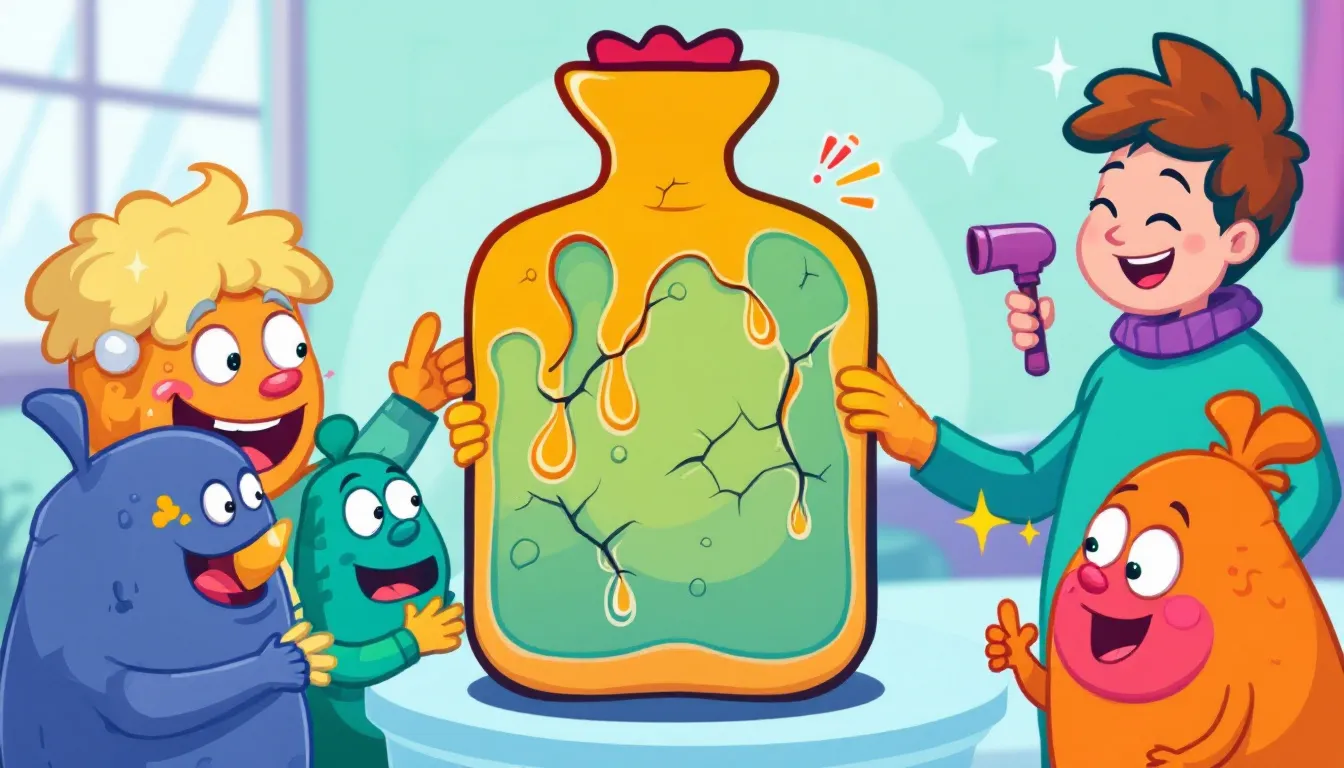
Replacing your hot water bottle at the right time prevents accidents. Indicators and guidelines for replacement include:
-
Visible damage, such as cracks or leaks, is a clear sign it needs to be replaced.
-
Most reputable brands offer a two-year guarantee, which guides you on when to replace your hot water bottle.
-
Regular replacement helps prevent accidents due to wear and tear.
Signs it’s time to replace your hot water bottle include visible damage, loss of heat retention, and following manufacturer guidelines.
Visible Damage
Any noticeable crack or leaks in a hot water bottle are clear indicators that it needs to be replaced. Cracks, leaks, or thinning rubber significantly reduce the bottle’s safety and effectiveness.
Loss of Heat Retention
A decline in heat retention indicates the hot water bottle may need replacement. If it no longer retains heat effectively, it may be time to consider replacing it, especially if the water feels colder than usual and the temperature is not as expected during the colder months.
Loss of heat retention can signal the end of the bottle’s usable life.
Manufacturer Guidelines
Following manufacturer replacement recommendations ensures optimal safety. Most manufacturers recommend replacing a hot water bottle every two years. These guidelines help maintain the bottle’s effectiveness and safety.
Safety Tips for Using Hot Water Bottles
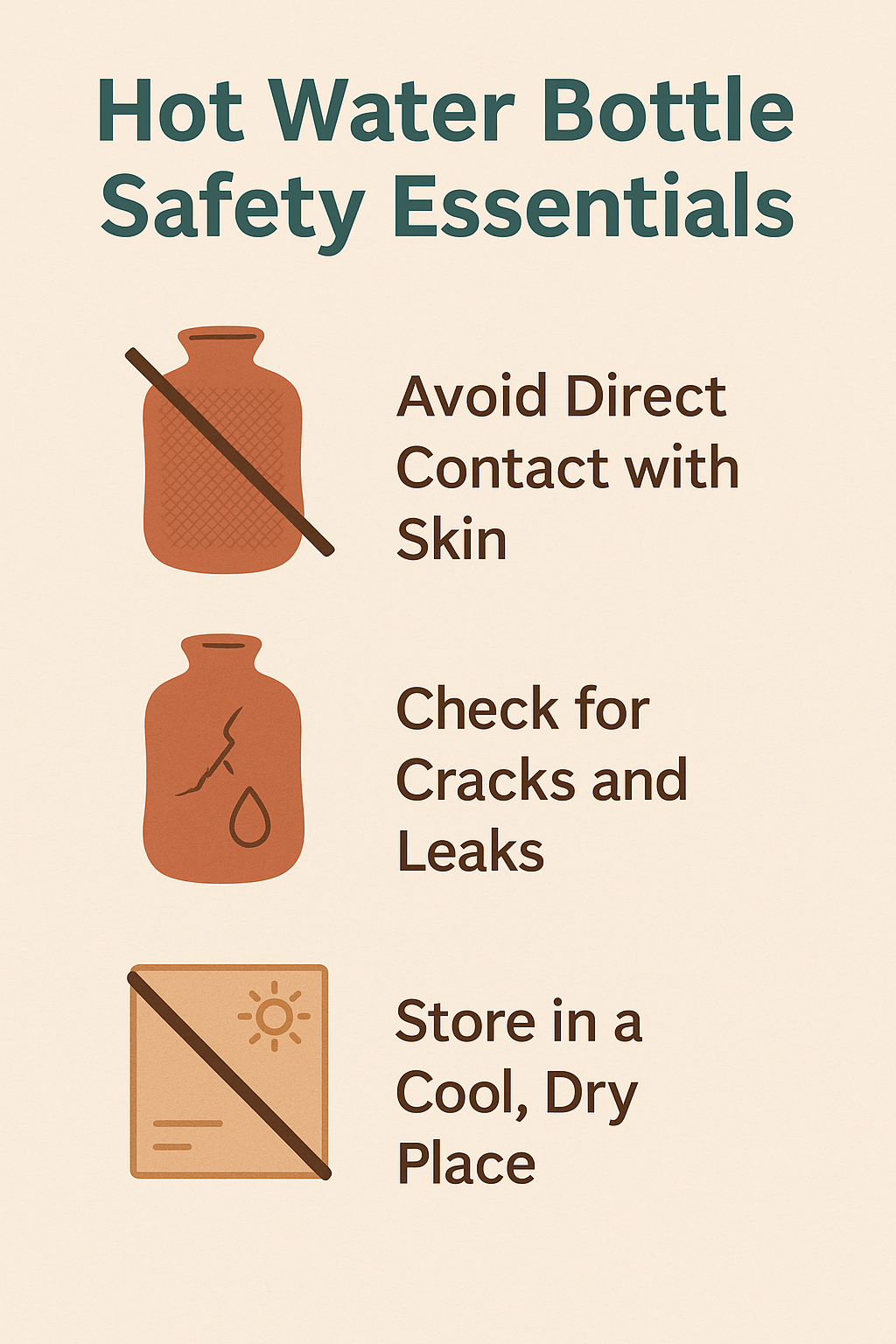
Using hot water bottles safely is paramount to avoid injuries. Here are some safety tips:
-
Always use a cover to prevent burns.
-
Never leave your hot water bottle unattended.
-
Avoid using boiling water directly in the hot water bottle as it can damage the seams.
These safety tips ensure that you use your hot water bottle effectively and safely.
Consider these safety practices: Avoid Direct Contact, Always Use a Cover, and Proper Filling Techniques.
Avoid Direct Contact
Wrap the hot water bottle in a warm cover or towel before use to prevent burns. Direct contact can lead to serious burns, especially for sensitive skin.
This provides a safe barrier between the sealed hot water bottle and your skin.
Always Use a Cover
Using a cover prevents burning, especially for vulnerable individuals. Never use hot water bottles without a cover to protect against burns.
Proper Filling Techniques
Use hot but not boiling water to fill the bottle to reduce accident risks. Fill the bottle to three-quarters capacity to minimize bursting risk.
Test the bottle by filling it with cold water and shaking it before use.
Summary
In summary, understanding the lifespan of your hot water bottle, recognizing signs of wear and tear, and knowing when to replace it are essential for safe and effective use. Proper maintenance practices, such as regular inspections, cleaning, and safe filling techniques, can extend the life of your hot water bottle.
By following these guidelines, you can ensure that your hot water bottle remains a reliable and safe source of warmth and comfort. Take action today to inspect and maintain your hot water bottle, and don’t hesitate to replace it when necessary.
Frequently Asked Questions
How often should I replace my hot water bottle?
You should replace your hot water bottle every two to three years to ensure safety and effectiveness, as the materials can degrade over time.
What signs indicate that I need to replace my hot water bottle?
You should replace your hot water bottle if you observe visible cracks, leaks, or a significant decline in heat retention. Prioritizing safety and effectiveness is essential for your comfort.
How can I check the age of my hot water bottle?
To determine the age of your hot water bottle, inspect the inner surface for a round logo, which indicates the manufacture date when the cover is removed.
What is the safest way to fill a hot water bottle?
The safest way to fill a hot water bottle is to use water that has cooled for about 15 minutes after boiling and to fill it to two-thirds capacity to prevent bursting. This practice ensures safe usage and minimizes the risk of accidents.
Can I use a hot water bottle without a cover?
It is not advisable to use a hot water bottle without a cover, as this can lead to burns and unsafe usage. Always use a cover for safe and effective warmth.



